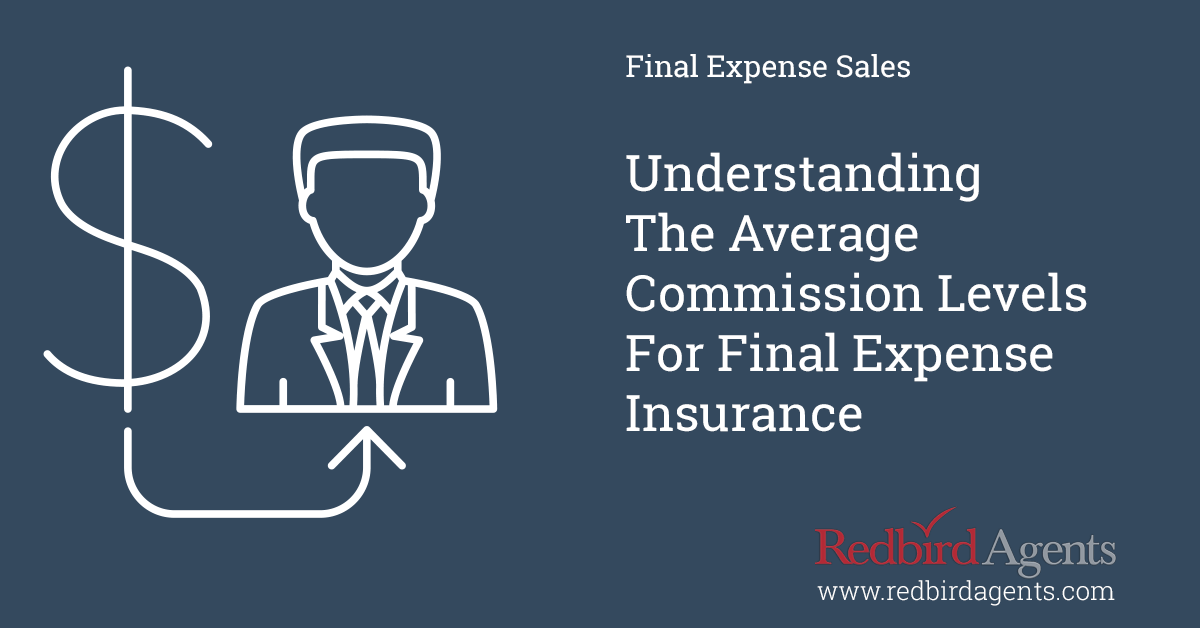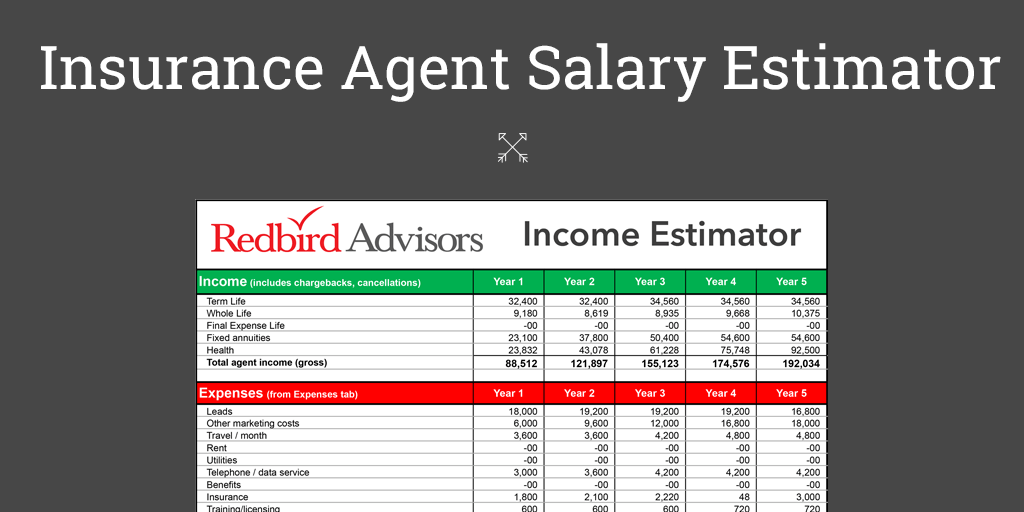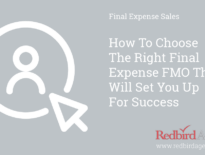
Final expense insurance is one of the most lucrative life insurance markets for independent agents, offering high commission payouts, fast approvals, and steady client demand.
If you’re considering selling final expense insurance, understanding how commissions work is essential to setting realistic income expectations and growing a successful business.
This guide will break down the average final expense commission rates, factors that impact earnings, and what you can expect as a new agent.
How Final Expense Commissions Work
Final expense insurance is typically sold as a simplified issue whole life policy, meaning no medical exams are required, and policies are issued quickly. Because of this, commissions tend to be higher than many other life insurance products, with most carriers paying between 80 percent and 120 percent of the annual premium in first-year commissions.
Here’s how it works:
- You sell a final expense policy with a $50 monthly premium
- The annual premium is $50 x 12 = $600
- Your commission rate is 100 percent
- You earn $600 in first-year commissions
Commissions are paid as a percentage of the first-year premium and vary based on your contract level, experience, and the FMO you work with.
Average Final Expense Commission Rates
While rates vary by carrier and contract level, here is a general breakdown of average commission percentages for final expense insurance:
| Agent Type | Average Commission Rate |
|---|---|
| New Agents | 80% – 90% |
| Experienced Agents | 90% – 110% |
| Top Producers | 110% – 120%+ |
- Captive Agents (who work for one insurance company) often earn lower commissions (50-70 percent) but may receive company-paid leads, training, and bonuses.
- Independent Agents (who contract with multiple carriers) typically earn higher commissions (80-120 percent) but must generate their own leads and handle marketing expenses.
- Agency level contracts are going to be higher and likely cap out around 140%. These levels require proof of production, but if someone offers them to you at the start, you should beware. If they are giving you such a high level, how can you expect them to be able to afford to support you. I tell this to every agent I talk to, but some just have to learn the hard way.
Factors That Impact Your Final Expense Commissions
Several factors determine how much you will actually take home:
Commission Splits (Working Under an Upline or FMO)
If you work under an FMO (Field Marketing Organization) or an upline, they may take a small percentage of your commission in exchange for training, support, and lead discounts.
Choosing an FMO that provides real value, such as training and marketing support, is more important than just seeking the highest commission percentage.
Chargebacks and Policy Lapses
Final expense sales rely on persistency, meaning clients must keep their policies active for you to retain commissions. If a policy lapses within the first six to nine months, the insurance company will take back your commission through a chargeback.
To avoid chargebacks, focus on selling to qualified clients who can afford the coverage long-term.
Advance vs. As-Earned Commissions
Most carriers advance commissions, meaning they pay six to nine months of commissions upfront instead of waiting for monthly payments.
- Advanced Commissions: Provide fast cash flow but carry a higher chargeback risk if the client cancels early.
- As-Earned Commissions: Pay commissions monthly as the client makes payments, eliminating chargeback risk.
New agents often prefer advanced commissions for faster income, while experienced agents may opt for as-earned commissions to minimize risk.
Renewals and Residual Income
Final expense policies offer small renewal commissions, typically five to ten percent of the premium after the first year. While not as high as term life renewals, these residuals add up over time, creating passive income.
For example, an agent maintaining 300 active policies could generate $15,000 or more annually in renewal commissions.
How Much Can You Earn Selling Final Expense?
Your income depends on:
- The number of policies sold per week
- Your lead investment
- Your commission rate
- Chargebacks and policy retention
Here is an example of potential earnings:
| Policies Sold Per Week | Annual Premium per Policy | Commission Rate | First-Year Earnings |
|---|---|---|---|
| 2 | $900 | 100% | $93,600 |
| 3 | $900 | 100% | $140,400 |
| 5 | $900 | 100% | $234,000 |
Selling three policies per week at a 100 percent commission rate could generate over $140,000 per year. Top producers who write five or more policies per week can easily earn over $200,000 annually.
Success in final expense sales depends on lead consistency and closing skills, not just commission rates.
Conclusion
Selling final expense insurance is one of the best opportunities for agents looking for high commissions, fast approvals, and a steady stream of clients. To maximize your earnings:
- Choose an FMO that offers training, support, and competitive contracts.=
- Focus on client retention to minimize chargebacks
- Invest in a steady flow of leads to ensure consistent sales
- Consider renewal commissions as part of your long-term income strategy
By staying focused and committed, you can build a profitable and sustainable business selling final expense insurance.
Next Steps
If you’re ready to start selling final expense insurance, research FMOs that provide competitive commissions, training, and lead support to help you succeed. The right partnership can make all the difference in your long-term income potential.


